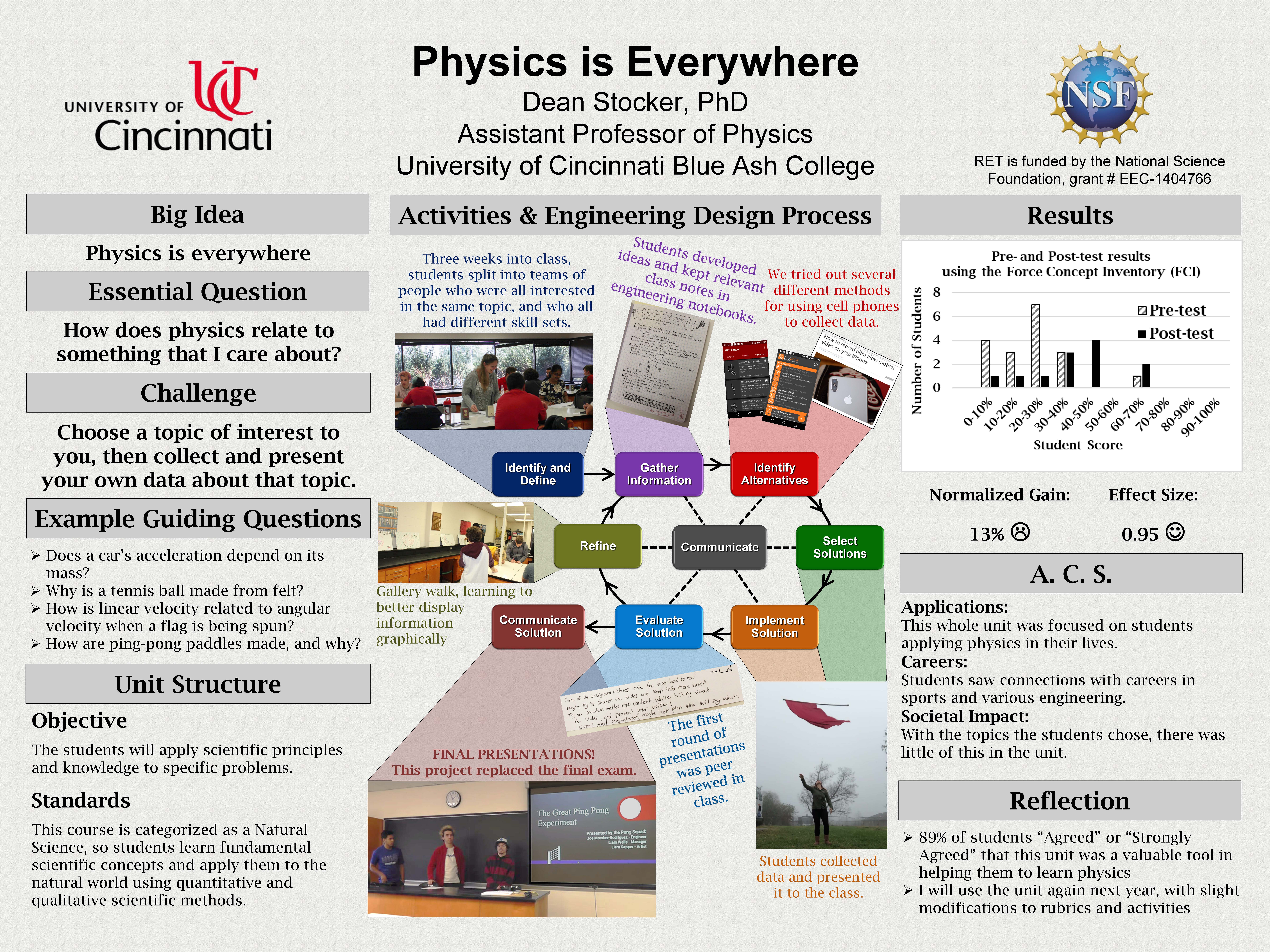Research Experience for Teachers (2018-2019)
Physics is Everywhere
 |
||||||
|
||||||
Keywords:
|
|
The Big Idea (including global relevance) Physics is everywhere |
|
Essential Questions
|
|
The Hook There will be a pre-first-class-survey asking how physics is related to the students' lives. Relevant survey questions:
|
|
The Challenge Find a way to clearly demonstrate how physical concepts are related to something you care about in your life. |
|
Guiding Questions
|
Pre/Post Test:
We will use the Force Concept Inventory or Mechanics Baseline Test as pre- and post-test:
https://www.physport.org/assessments/assessment.cfm?I=5&A=FCI
As per the recommendations from PhysPort, students will receive credit for completing the assessment but will not receive a grade based on their performance on the assessment.
ACS (Real world applications; career connections; societal impact)
This is the focus of the entire unit: applying what we are studying in this course to something the students care about in their own lives.
This will strongly depend on the topics chosen by the students.
This will be done mostly through brainstorming with the students. My students typically come from a wide variety of backgrounds, so will likely be able to come up with various technical and engineering examples, and I will fill in during brainstorming as needed to include various fields in science and engineering, with which I am familiar having worked in industry for many years.
Misconceptions
- Acceleration and velocity are always in the same direction.
- If velocity is zero, so is acceleration.
- Removing centripetal force on an object will make it fly directly away from the axis it was circling.
- If there is no change in speed (magnitude of velocity), there is no change in momentum.
- Acceleration in one direction affects velocity in another direction.
Unit Lessons and Activities
- Lesson 1: Students will choose their topics, make a list of subject matter that we will need to cover, and apply the subject matter to their chosen topics.
- Activity 1: Survey, brainstorming, forming groups, and listing subject matter (2 days)
- Activity 2: Three times, students fill out pages in an engineering notebook with something they have learned in class and how they will relate it to their chosen topic (1 day of class time over the course of 8 weeks)
- Lesson 2: Students will collect data, analyze it, and present it to the class.
- Activity 3: Presentation of data collected during RET activity and what it showed. Then an overview of several different ways that smart phone apps can be used to collect data. Students will decide how to collect the data they need and then collect that data outside of class. (1 day)
- Activity 4: Sample activity using air pollution data on a major road and correlating it to the power needed by vehicles to drive that stretch of road. Students will learn to analyze data and present it graphically. (1 day)
- Activity 5: Students will make a preliminary group presentation, get peer feedback, refine their data collection, analysis, and presentation, and then make a final presentation two weeks later. (4 days, over the course of 2 weeks)
- Evidence of CBL: Lesson 1, Activity 1; Lesson 2, Activity 3; Lesson 2, Activity 5
- Evidence of EDP: Lesson 1, Activity 1; Lesson 1, Activity 2; Lesson 2, Activity 3; Lesson 2, Activity 5
Additional Resources
